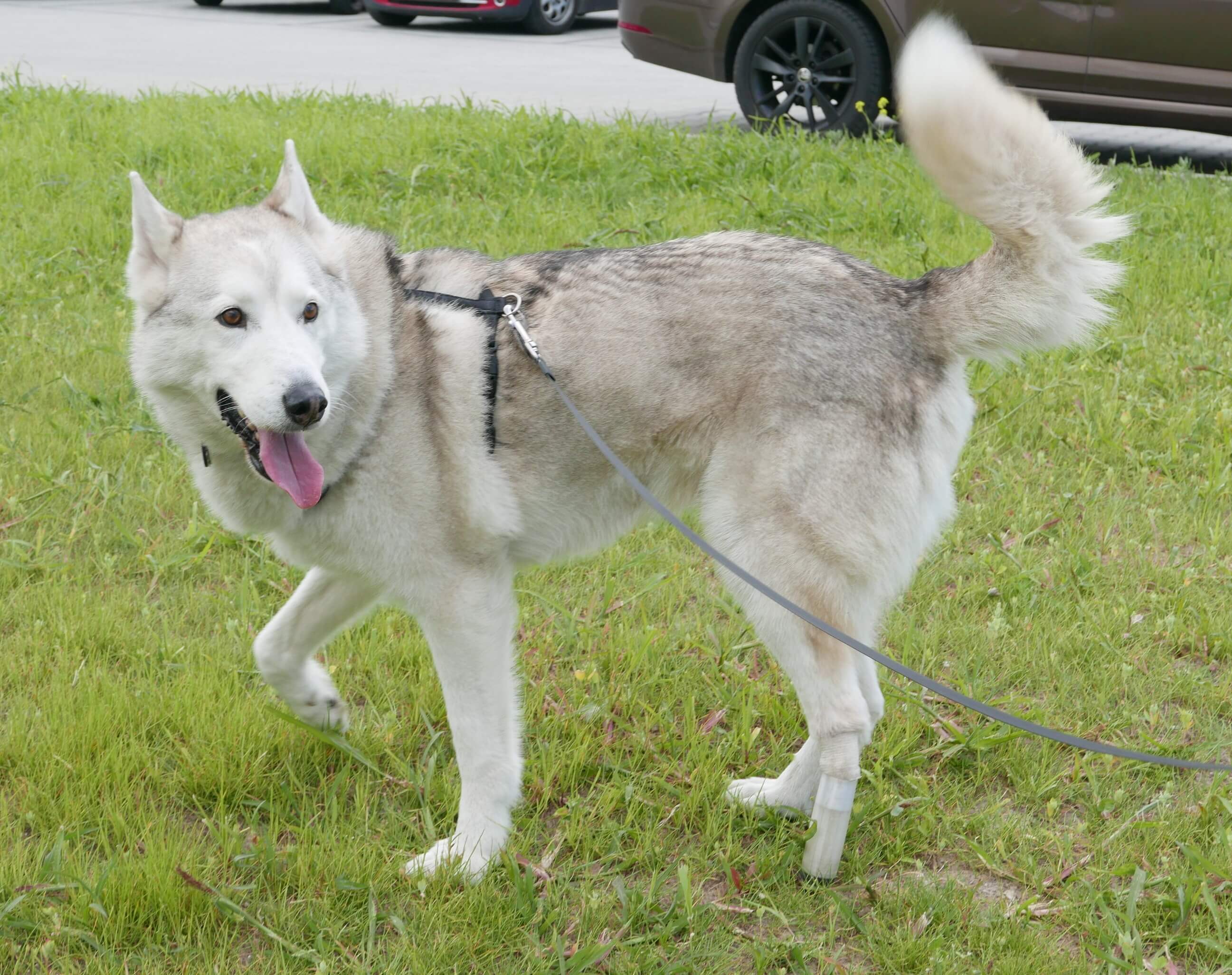Over 6 years ago, Hugo, a young husky dog, got stuck in a hunting snare in the forest. The injuries caused by the poaching snare were incurable - it was necessary to amputate Hugo's back foot just above the ankle.
The mutilated dog was given to the animal shelter, where his story has started - this is where it was found by its current owners, who decided to return the dog to the functionality of the limb.
After five years of searching, the owners found a clinic that already dealt with similar cases and decided to help the dog. At the end of 2017, Hugo had a specialist operation, which involved implanting an intracorporeal implant to fit a prosthesis. A few months later, the owners of the dog asked us for help with the prosthesis. Together with the vet, we were looking for the most comfortable and beneficial solution for Hugo, which would allow him to move around freely and without pain.
Looking for the optimal solution
We started our work by making an anatomical model of an amputated paw on a scale of 1:1 based on a pre-operative CT scan. This model was used as a base for creating a prosthesis for the dog. We analyzed the solutions used in veterinary medicine and chose a few proposals, which we discussed with the vet. Together we chose the best version for further progress.
The prototypes were created based on a similar concept: a prosthesis (PET-G body and TPU sole) fitted on a limb up to the height of the heel bump, fixed on a threaded mandrel and secured with an elastic bandage. We tested several models of this type, based on which we were informed about the appropriate dimensions of the prosthesis, but it turned out that the built-in version of the model rubs the dog's foot and obstructs daily use.
Thanks to the tests and suggestions of Hugo's owner, who observed the dog's behavior and reaction, we created a version of the protection, which Hugo used for six months. The prosthesis was fully made of TPU, screwed directly on to a threaded pin placed in the bone and covered Hugo's paw to a minimum extent. It was differentiated in terms of filling - at the bottom, it was a small percentage in honeycomb form to provide cushioning.
After six months of successful tests, we received the final suggestions from the owner of the dog, the changes to which needed minor modifications to the existing prosthesis. One of them was to return to the body made of PET-G material, which was light and durable at the same time.
 The Hugo dog in the prosthesis
The Hugo dog in the prosthesis
Body of PET-G, sole of TPU
The final version of the prosthesis consists of a body made of PET-G material, a sole made of TPU material and cushioning foam, located between the previously mentioned elements. We have returned to the previous version with a body made of PET material. We completely abandoned the Hugo foot collar to avoid irritation. The owners' observations show that Hugo moves very freely in the denture. What is more, the paw and implant site has completely healed.
The combination of technology and medical knowledge made it possible to restore the mobility of the Hugo dog. The use of 3D printing and an individual approach to the case has resulted in a prosthesis that allows Hugo to draw "paws" from his dog's life.
